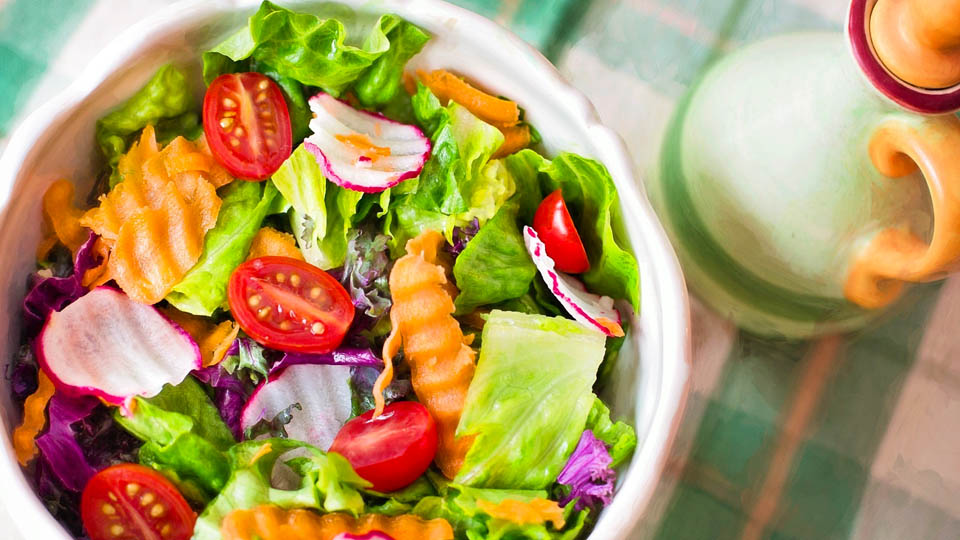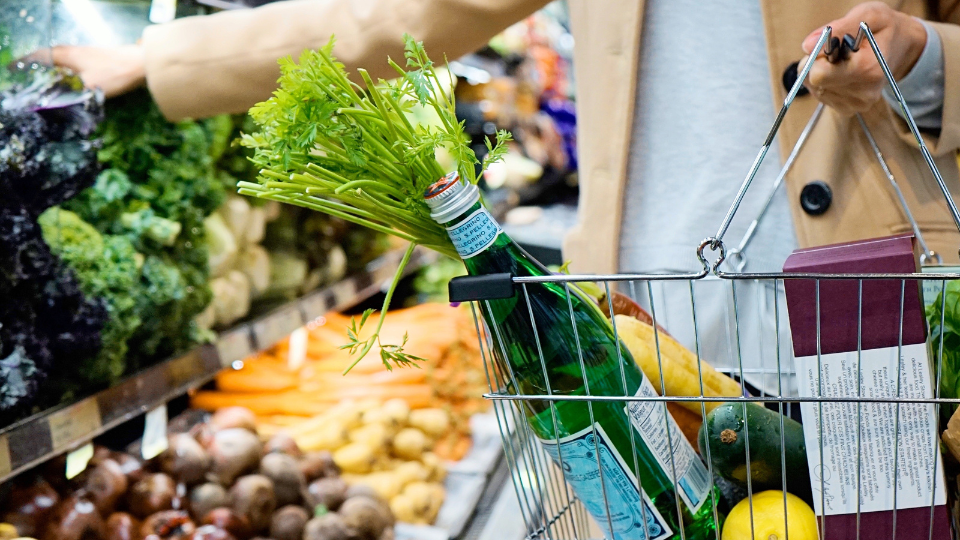Food Waste Prevention Part 2: Meal Planning

You can prevent food waste in your home by making small changes to the way you buy, store, and eat your food. In this section, we will discuss ways to take inventory of your kitchen, meal plan for the upcoming week, and create grocery lists before going shopping. Taking the time to do these simple tasks will help save you money, time, and reduce the amount of food being wasted in your home. Many people struggle to find time to meal plan during the week because they feel it consumes their time and energy. But setting aside a time to meal plan weekly or monthly can help eliminate stress and save you time in the long run by decreasing the number of trips you take to the grocery store, and the amount of time you spend deciding what to make each night. Schedule some time minutes each week just for menu planning and follow these three steps for success:
1. Take Inventory: What food do you have on hand?
Taking inventory is a very important part of meal planning. Doing this first allows you to see what you already have in your home and then plan meals accordingly. Look in your freezer, cabinets, pantry, and/or refrigerator and make a note of what you already have on hand and potential meals you could make with those ingredients. Using these items in your upcoming week’s meals will save you money and decrease food waste. Taking an inventory before making your grocery list also helps you avoid buying things you don't need.
2. Choose your meals
There are many ways to go about planning your meals for the week. Using an inventory and a list of go-to recipes to think of main dishes for each day is helpful. Once you have your main dishes selectd, you can then go back and plan side dishes to make a well-balanced meal for each day. It can be helpful to use the USDA’s MyPlate Guidelines, but remember the guidelines are for the whole day, not each meal. You may want to consider your family’s schedule, meals that your family enjoys, and what is on sale that week at the grocery store (check their flyer or app). Finally, don’t forget about leftovers —plan to use them later in the week or freeze for another meal.
3. Create a Grocery List
Once you have taken inventory and outlined the meals you want to eat for the week, it is time to make a grocery list. Make a list of the ingredients that you don't already have for the meals in your weekly plan. Remember to include foods like fruits, vegetables, and milk that might not be a part of a recipe but are basics for healthy eating. Organize your list into different grocery store sections or food groups to make shopping quick and easy.

Tips to Make Meal Planning Easier
- If you've never meal planned before, start by just planning a dinner menu for the week. After you get used to this, you may want to do the whole day or a menu for the month.
- Create a running list of recipes that your family enjoys or that you want to try. You can visit our USU Extension Recipe Page or websites like Create Better Health or MyPlate Kitchen to get recipe inspiration for nutritious and affordable meals. Find a way to organize these recipes that works for you. You might try the meal planning apps discussed above, a folder, a coupon holder, or a traditional recipe box. Others find that a folder on their computer or a website like Pinterest works best for them.
- When meal planning, it is important to consider your schedule for the upcoming week. Choose meals you can easily prepare when you don't have a lot of time. Save recipes that take longer for days off. You also can prepare meals in advance to heat and serve on your busiest days.
- Plan to use leftovers by thinking about larger recipes with enough servings for multiple meals. This can reduce the number of ingredients you need to buy and cooking time.
- As you meal plan, remember that MyPlate is a guideline for a well-balanced diet throughout the day. You do not necessarily need to eat every food group at each meal, as long as you eat extra of that group at other meals. For example, if you don’t eat any veggies at breakfast, have an extra-large salad for lunch, or vegetable soup and a side vegetable at dinner. Strive to incorporate each of these food groups into your diet throughout the day.
Resources
You can find many great resources out there to assist you in meal planning. There are many free meal planning mobile apps. Apps are a great option because they keep all the information on hand in your phone. If you prefer having it on paper, there are many templates online you can choose from according to your preferences.
Printable Meal Planning Templates
MyPlate Grocery List and Meal Plan
The MyPlate grocery list and meal plan allows you to make your grocery list with different sections according to food groups on MyPlate. You can plan breakfast, lunch, dinner, and a snack with the meal plan. You can do this as a fillable PDF or print it out to write on.
View ChooseMyPlate Grocery List and Meal Plan
Grocery Shopping Packet
This template is a full packet created by USU Extension Create Better Health (SNAP-Ed) that includes tips for meal planning and grocery shopping, a 7-day meal plan of breakfast, lunch, and dinner, and a grocery list in sections of food groups.
Meal Plan Handout
This handout from USU Extension Nutrition includes planning tips, a 7-day meal plan for breakfast, lunch and dinner, and a grocery list split up by various sections in the grocery store to make shopping easier.
New apps are being released every day to assist you in your meal planning and cooking efforts. It can be overwhelming to know which one to choose. Below is a list of some free apps from recommended lists on various nutrition websites. On all of these apps you can use the recipes they offer as well as collect and save your own recipes in the app.
Free Meal Planning Apps (Android & iPhone)
Cooklist
Includes an inventory feature to keep track of everything you have in your pantry, then gives you recipe ideas and meal plan according to what you have. Includes a grocery list and meal planning calendar.
Mealime
Offers customizable recipe ideas and meal plans according to your preferences. It automatically generates a grocery list according to your meals. This app is also designed to help you eliminate food waste in your home.
Whisk
Create meal plans, grocery lists, and search recipe ideas according to your diet and cooking preferences. This app allows you to save recipes from anywhere online or insert your own.
To learn more ways to reduce food waste, see Part 3: Grocery Shopping.
References
- Create Better Health. (n.d.). Retrieved November 19, 2020, from https://extension.usu.edu/createbetterhealth//about
- Create Better Health. (n.d.). Retrieved November 19, 2020, from https://extension.usu.edu/createbetterhealth/plan/shop
- Hanulak, M. & Hanulak, A. (September, 2010). Meal Planning System. United States Patent Application Publication. https://patentimages.storage.googleapis.com/4c/e8/ca/dcfa43a42f6fbd/US20110070566A1.pdf
- Locke, A., Schneiderhan, J., & Zick, S. M. (June, 2018). Diets for health: Goals and guidelines. American Family Physician, 97(11):721-728. https://www.aafp.org/afp/2018/0601/p721.html
- Plan Your Weekly Meals. (n.d.). Retrieved November 16, 2020, from https://www.choosemyplate.gov/eathealthy/budget/budget-weekly-meals
- Romani, S., Grappi, S., Bagozzi, R. P., & Barone, A. M. (2018). Domestic food practices: A study of food management behaviors and the role of food preparation planning in reducing waste. Appetite,121, 215-227. doi:10.1016/j.appet.2017.11.093
- Storfer-Isser, A., & Musher-Eizenman, D. (2013). Measuring parent time scarcity and fatigue as barriers to meal planning and preparation: Quantative scale development. Journal of Nutrition Education and Behavior, 45(2), 176-182. https://doi.org/10.1016/j.jneb.2012.08.007
Authors
Meghan Adair, Dietetics Student; Carrie Durward, Nutrition Specialist
Related Nutrition Articles







